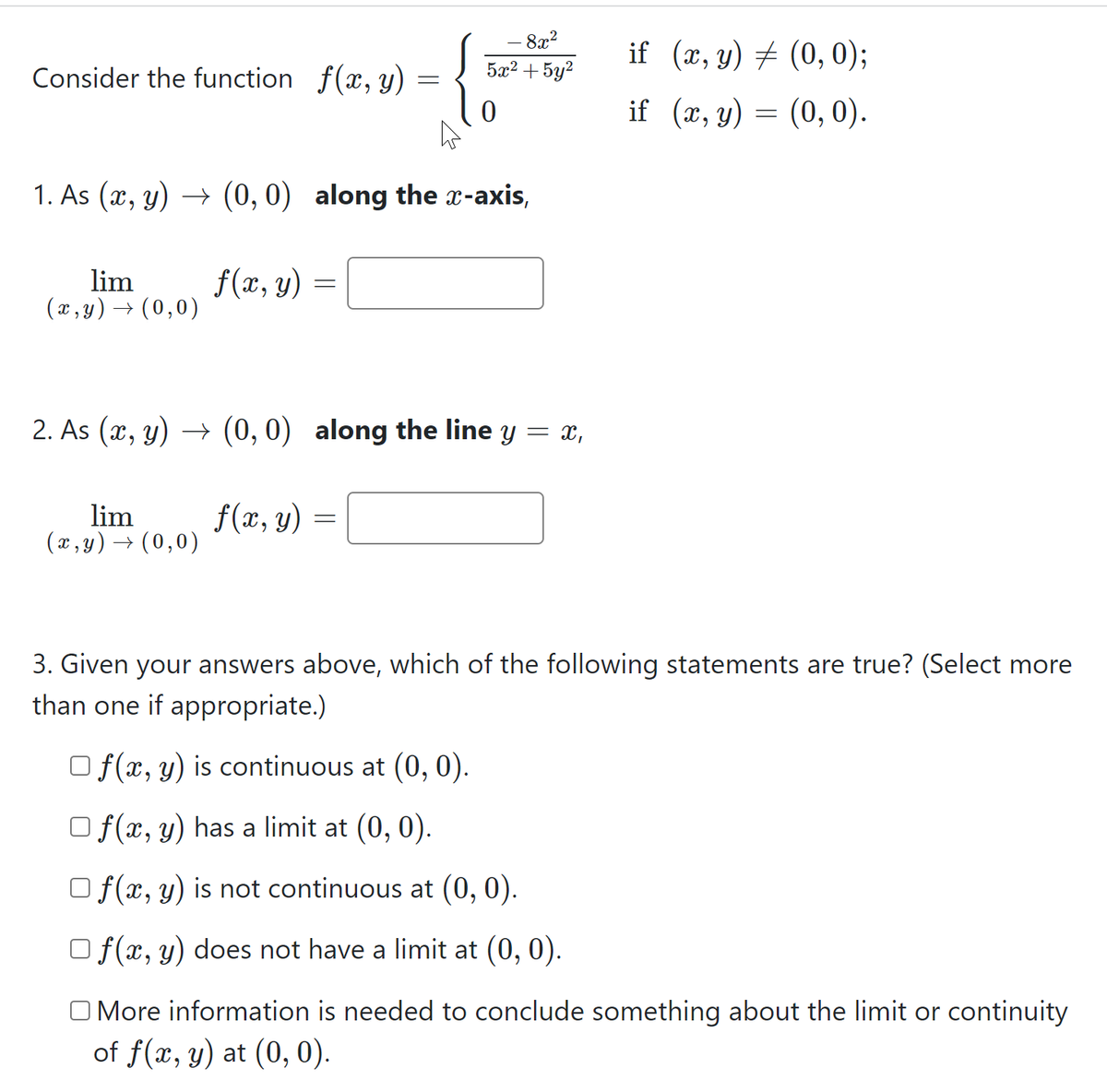Linear Algebra: A Modern Introduction
4th Edition
ISBN:9781285463247
Author:David Poole
Publisher:David Poole
Chapter6: Vector Spaces
Section6.5: The Kernel And Range Of A Linear Transformation
Problem 30EQ
Related questions
Question

Transcribed Image Text:- 8x?
5æ2 + 5y2
if (x, y) + (0,0);
Consider the function f(x, y)
if (ӕ, у) —D (0, 0).
1. As (x, y) → (0, 0) along the x-axis,
lim
(x , y) → (0,0)
f(x, y)
2. As (x, y) → (0, 0) along the line y = x,
lim
(x , y) → (0,0)
f(x, y)
3. Given your answers above, which of the following statements are true? (Select more
than one if appropriate.)
O f(x, y) is continuous at (0, 0).
O f(x, y) has a limit at (0, 0).
O f(x, y) is not continuous at (0, 0).
O f(x, y) does not have a limit at (0, 0).
O More information is needed to conclude something about the limit or continuity
of f(x, y) at (0, 0).
Expert Solution
This question has been solved!
Explore an expertly crafted, step-by-step solution for a thorough understanding of key concepts.
Step by step
Solved in 4 steps with 4 images

Recommended textbooks for you

Linear Algebra: A Modern Introduction
Algebra
ISBN:
9781285463247
Author:
David Poole
Publisher:
Cengage Learning


Linear Algebra: A Modern Introduction
Algebra
ISBN:
9781285463247
Author:
David Poole
Publisher:
Cengage Learning
